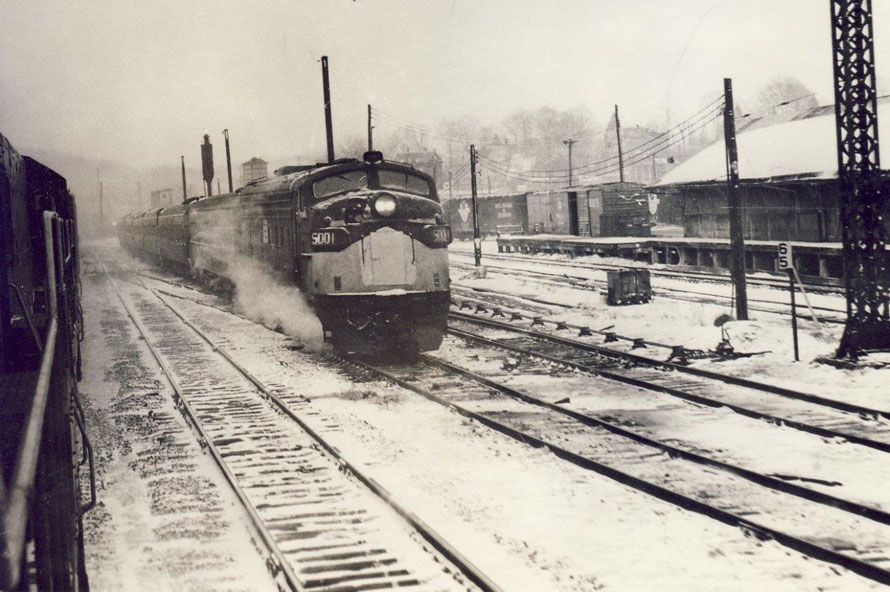
When my mother asked me to write a story on my trips to Maybrook as a fireman for the Penn Central, I had to give it much thought. It had been more than twenty-nine years since I had been there and I had to dig deep to remember what a trip was like. They were all good ones because I never derailed or had any accidents on any of my trips. Some of the guys you worked with of course were better than others. What I mean by this is more of a personality angle than anything else. Some engineers were quiet and others would talk to you and explain things to you during the trip. Unfortunately some did not like having an “off division man” in the cab.
This came from the days on the New Haven Railroad. There were numerous divisions of men on the New Haven and the two divisions or rosters that pertained to going to Maybrook were the Central New England (CNL) and the Western. The entire New Haven was divided up by trackage rights. Western trackage rights started in New Haven at Cedar Hill Yard and went to Hopewell Jct. The “Beacon Branch” went from Hopewell Jct. to Beacon and connected to the Hudson Division, a distance of about twelve miles. From Hopewell to Maybrook was Central New England.
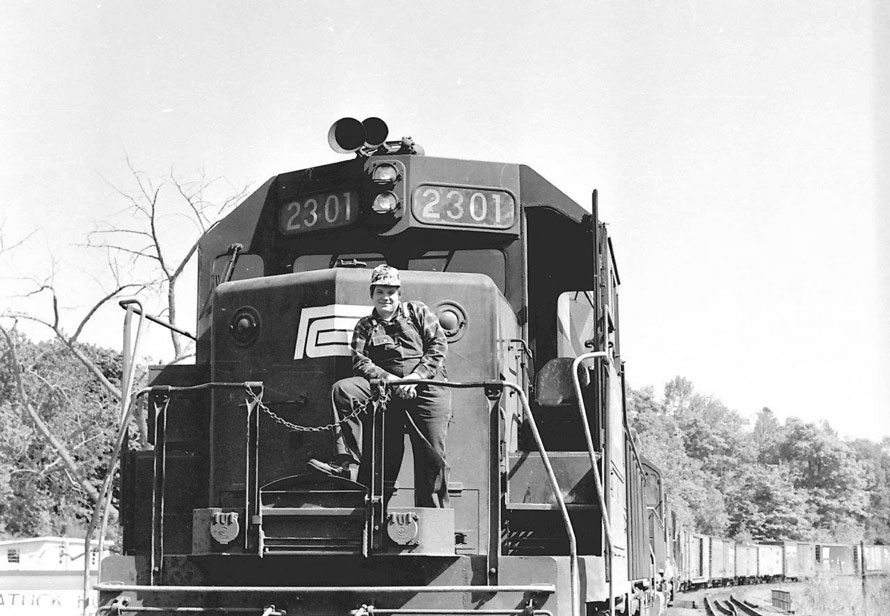
I’ll try to tell you what it was like from the time I would get the call to report until we yarded the train in Maybrook. We are going to start our trip from Cedar Hill Yard and make a typical round trip. Keep in mind this is all from a memory going back almost twenty-nine years.
There were four trains going east as well as four trains going west into Maybrook that ran seven days a week. Just as a side note, at this time there was also a freight job out of Waterbury, Connecticut that ran to Cedar hill six nights a week and serviced Derby yard, Naugatuck yard and also Waterbury yard. The symbol of this job was DN-1 and on its return ND-2.
I was called one night to be the fireman on the job and I met one of nicest engineers I would meet in my career on the railroad. His name is John O’Connor. He retired from Conrail about twenty years ago. John was one of few Western engineers that I made trips to Maybrook with, and after he felt comfortable with me, he would let me run the engine. John never had a problem with an “off division man” like some of the men did. John loved to have a firemen and when they did away with that position he was one of the men that were sad to see the job go. When the railroad got rid of the firemen from all freights they started an engineer’s training school for engineers and to this day that is how a person becomes an engineer. The schooling on Amtrak takes about 18 months to complete. Today, the new engineers do not get to be firemen and work with many different engineers like we did. This is very unfortunate because I learned a great deal from the old-timers as did all firemen. Today that element of learning how to run a train is gone and many of “old-timers” today see the outcome of this.
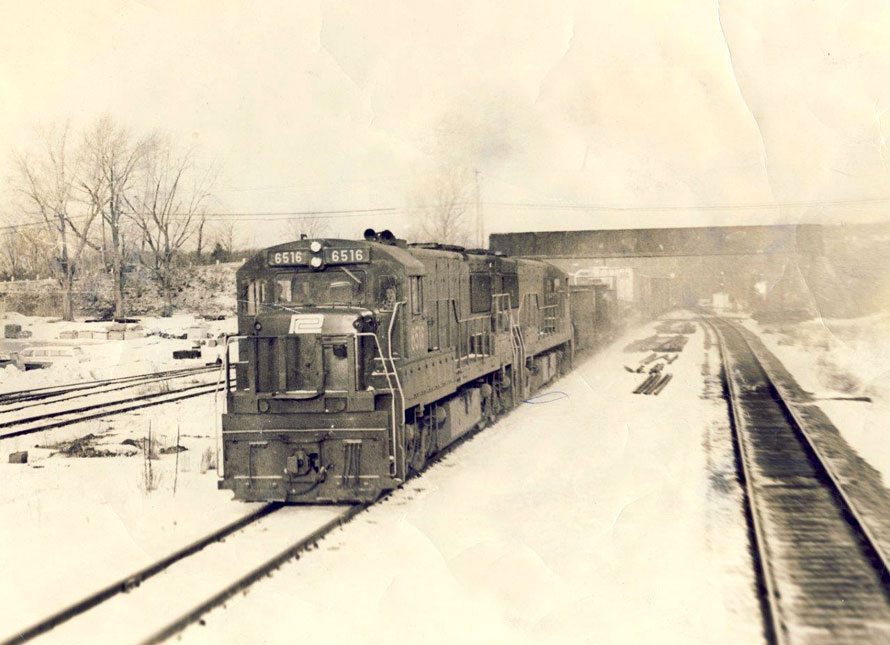
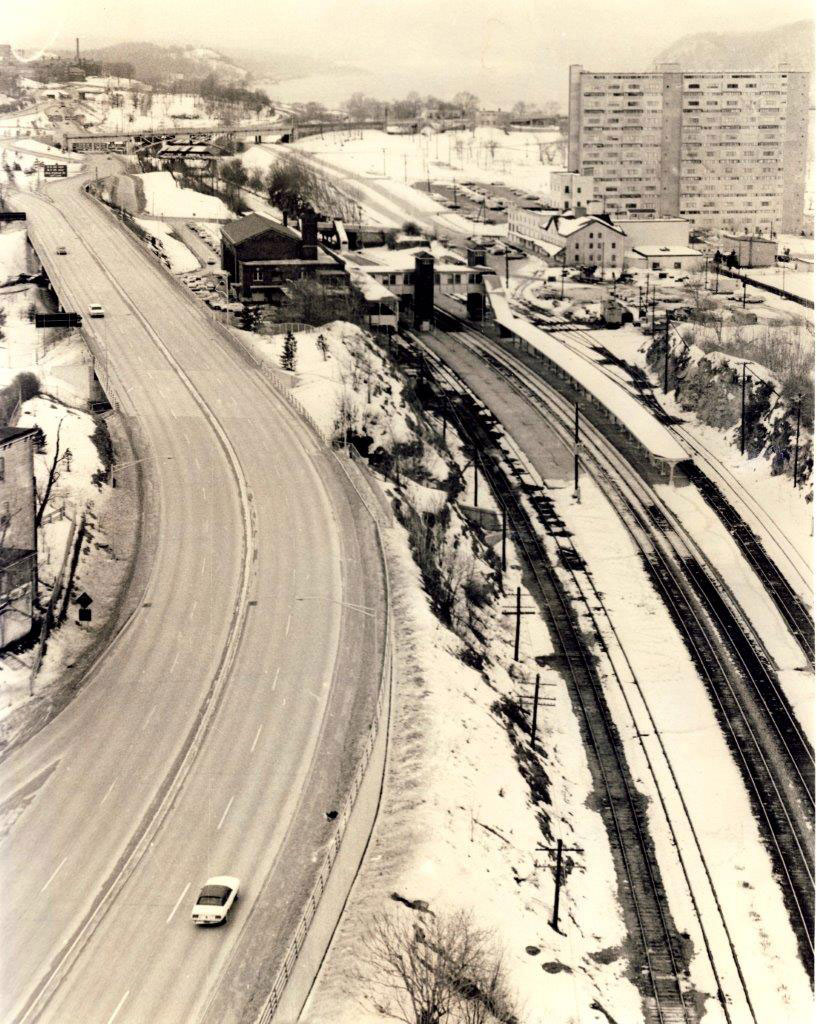
Those four jobs that went to Maybrook had the following reporting times.: 10 p.m. for NDN-1, 8 p.m. for Advance CB-1, 10 p.m. for NO-3, 2 a.m. for BO-1.One of my favorite jobs was NO-3 and I worked this job many times and was lucky enough to work most of the time with the same engineer, Kenny Davis. Kenny smoked cigars and could make one cigar last almost the entire trip! He went through a book of matches to keep it going but only one cigar. After I started smoking cigars I would give him one when we worked together because he was such a nice guy. Because it was 126 miles from Cedar Hill yard to Maybrook and most of the time you were going about thirty miles an hour and you also made about three stops to pick up and drop cars, it took about twelve to fourteen hours to make the trip. There were two sides to every job. This meant that the four regular trains that ran each way had two crews that would report on every other night. This meant that everyone worked seven days a week unless they “booked off”. This is a RR term for taking a day off.
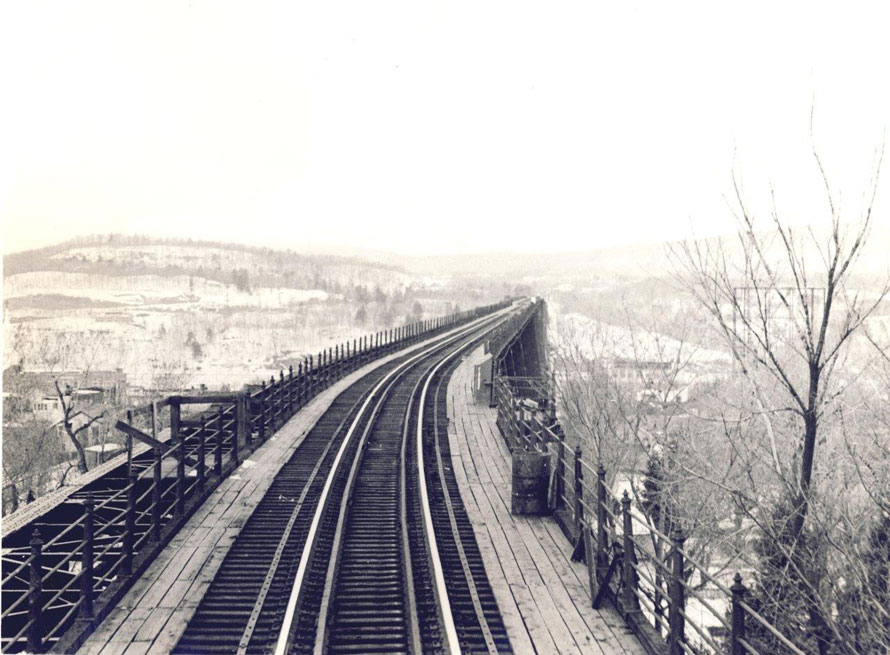
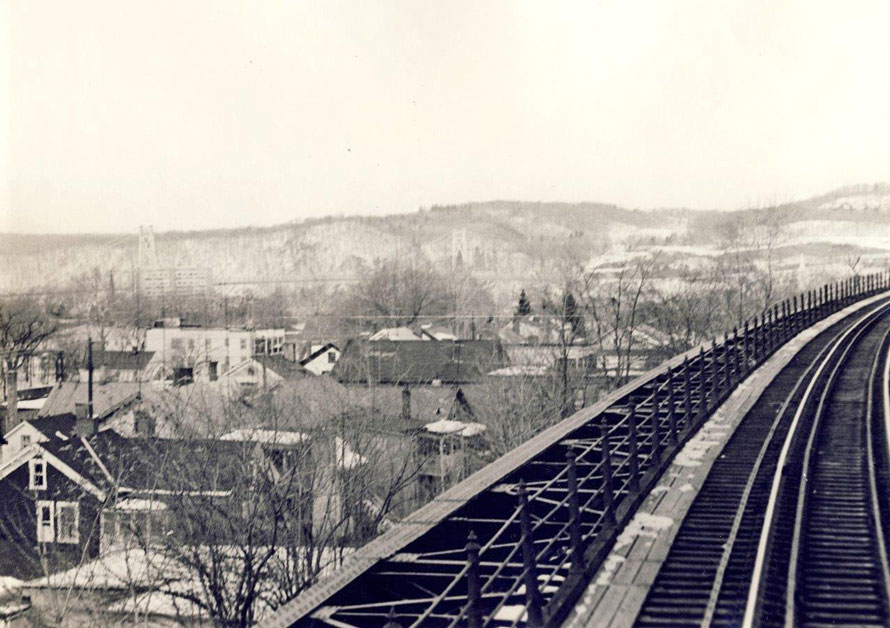
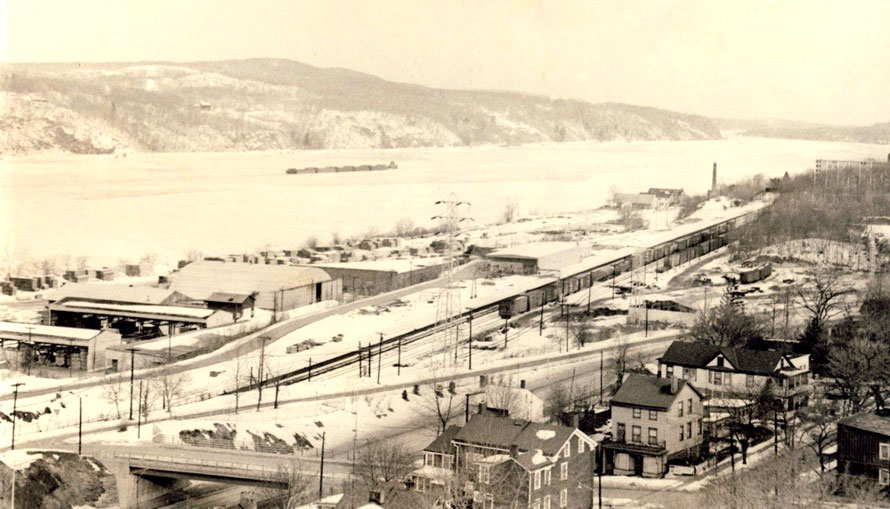
freight cars on New Haven.
There is an all-night diner at White Street Crossing and this was the only spot you could get something to drink during the run.
So now we will talk about what would make up the trip. I will start out of Maybrook in describing the tracks. It was single track from C.P. Berra; this was outside Maybrook Yard to C. P. Fairgrounds just west of Danbury and double track from there to C. P. Berkshire Jct. Then back to single iron to C.P. Derby. Here it was double track to Devon where you would join the four track main line to New Haven. From Maybrook to C.P. Derby there were five passing sidings. These sidings were a bit different from other places I have been on the railroad. The dispatcher who was known as the “Berkshire Dispatcher” would line you into the siding from the west end of it. There was a signal on the east end to let you out of the siding but the switch was a spring-switch that was lined for the main line. Only, on several occasions I believe it was when you had to double the hill at Towners, you would stop and line that switch for the siding, pull the headend of the train in and drop it and return to your train and bring it up the hill put it together and continue your trip.
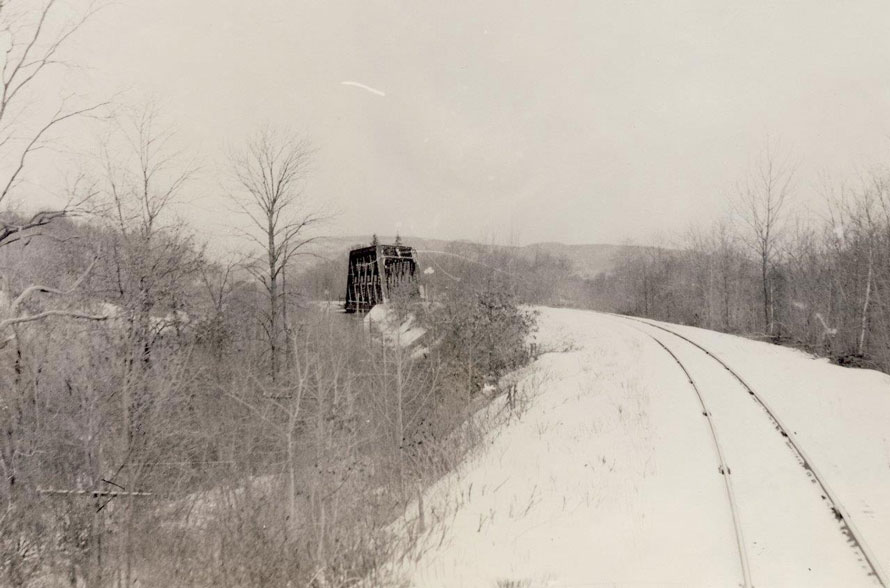
It’s night time in the fall of 1970 when I make my first trip. If I was going to work with a C.N.E. engineer I would see him at the Railroad YMCA, this was located a short walk to the engine house. If it were a Western Man I would meet him at the engine house. After signing up I along with the rest of crew would check the bulletins in effect for our trip. Then ask the foremen what we had for power and I would get ice and water for our trip and walk out to the engines and check them out. What my duties entailed was checking for flares, torpedoes, water level and engine oil. The paper work in the cab was checked by the engineer. We put our grip on the west end of the power and then walked to the east end and pulled up the switch leading out of the engine storage tracks. No radios in those days, the headend brakeman went to the phone and called the East Hump Yardmaster and got permission out. He would then line us out and we would pull out he would line the switch back and come up to the headend and we would go towards our train in the “departure yard”.
After checking with the car knocker foremen on duty to make sure the train was all together and the air hoses coupled we would tie on and pump up the air. After a few minutes depending how cold it was and how long the train was we would get a signal to apply the brakes and the car knockers would walk toward the rear of the train making sure the brakes were applied on each car. After they did this we would get a signal to release the brakes. While this was taking place the conductor would be on the phone talking to the dispatcher over whose territory we would travel. He would tell each one how many cars we had and what work as far as picking up or dropping off cars we had on their territory as well as any restrictions on any of our cars. When this was done the conductor would tell the “East Class Yardmaster “and he would give us permission to go. As I said there were no radios then and every engineer had to have marks at every place we stopped to pick up and drop cars and also spots to pick up the crew in the “hack” as we called the caboose. So we would depart and in this case if you did not go slowly at the right time for the conductor and his flagmen to get on he would call the towermen at “New Haven East” and tell him not to give you the signal to go. Since this was rather embarrassing the Engineer rarely made a mistake by going too fast.
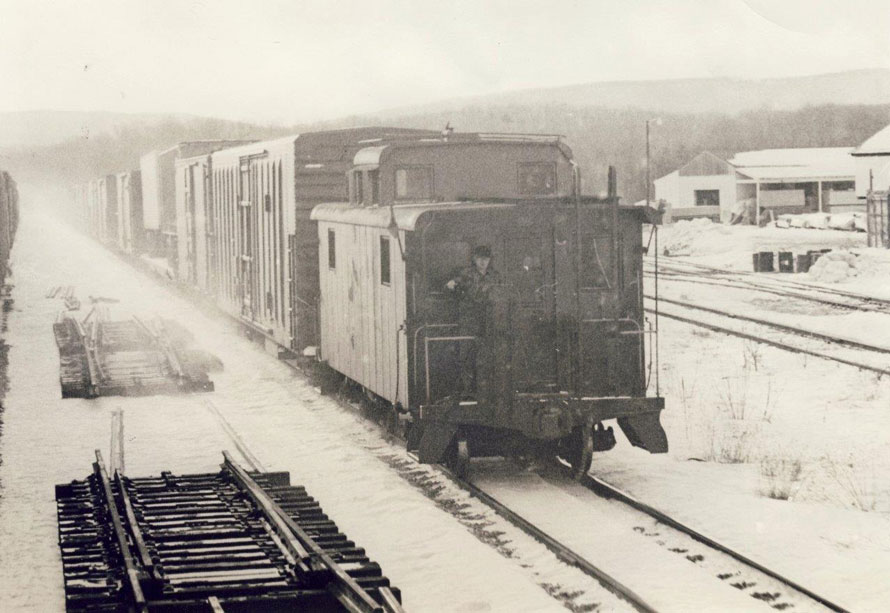
in snow.
Our trip would take us out onto the “main line” at Mill River interlocking. This interlocking as well as a six more was controlled by one tower with two men on duty around the clock seven days a week. Many times the towermen at New Haven east would let you know what time you would get a shot through the station so you could time it just right and not have to stop down in the “cut” just before the station. Most of the trouble you have with running a freight train was making it stop and starting it up. You would make your way through the station at about fifteen miles per hour.
In those days of “real” railroad men, everyone looked the train over as it passed through the station. If a hand break was on one of the cars or something was dragging from one of the cars they would let the tower know and they would stop you at Woodmont interlocking and let you know. After you went through New Haven station you would start up West Haven hill and it was at this point the engineer would get a good feel of how the power was and how the trip would go from the speed we would maintain going up this hill. He could tell by the speed you were going at this point how fast you would go up the Berkshire Mountains on the way to Maybrook.
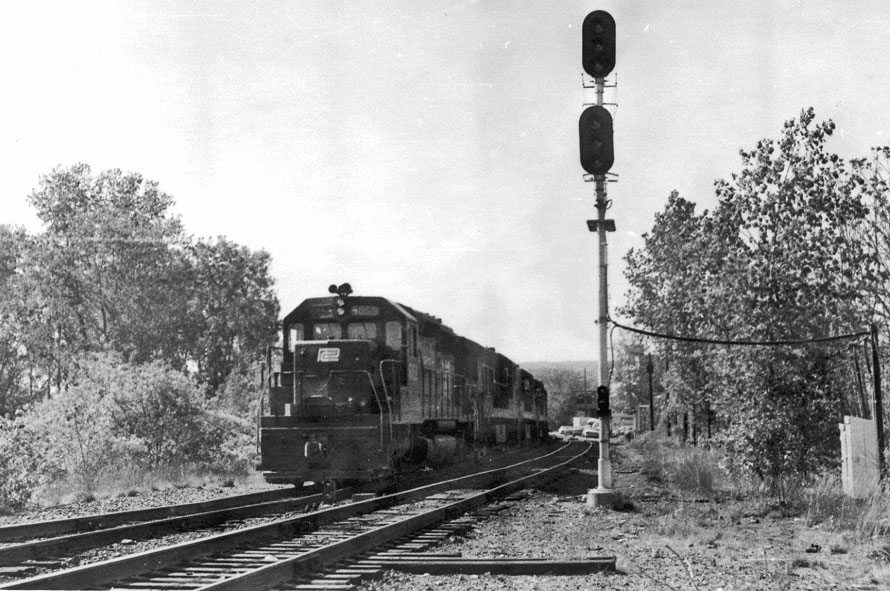
We would go west to Devon Tower where we would be lined towards Waterbury. If we had train orders the towermen at Devon would hoop them up to us, otherwise he would just give us a wave and watch our train go by again checking for hot boxes or anything else. In those days we did not have all roller bearing’s in all the axles. If you had a “hot box” it was where the axle went into the wheel and it would burn up and let go. This could cause a very big derailment. This box contained “rag waste” that had to be kept oiled so it did not get hot. After we got on straight iron we would increase the speed of the train till we got to “Turkey Brook.” This was several long sidings where east and west bound freights would drop and pick up cars that were destined for the “Naugy” branch as well as any of a number of sidings in and around Derby.
In those days there were many companies along this line that got their raw materials from the railroad. Everything from sneakers to brass hinges were made in what was known as the “Valley.” This CP point was called CP Derby. We would go to the left here to get to Maybrook; if you went right you would go to Waterbury Connecticut. The speed through here was very slow because the tracks snaked through downtown Derby. After clearing this slow down we started up our first hill going past Newtown Station and on to CP Botsford. At one time there was a track from here to Bridgeport called the “Stephany Branch.” It was long gone by this time. Botsford Station was still here as well as a water tower. There was a big curve here and you could see almost to the end of the train depending on its length. After we got through here we started downhill towards Berkshire Jct. As a rule you would stop here to pick up cars that came down from a local freight off the “Pittsfield Line.” From here it was two tracks and you would pass through Danbury yard. If you stopped at Berkshire Jct., you would not stop at Danbury yard unless you had an engine to drop off for the trains that worked out of there. If you did not have to drop an engine you had to slow down to a crawl to pick up your swingman at Danbury Station. This was done because New York had what was called the full crew law.
If you had a good swingman the conductor would have called him at Cedar Hill and given him the coffee order. There is an all-night diner at White Street Crossing and this was the only spot you could get something to drink during the run. After we left here you would go past C.P. Fairgrounds and head for “State Line Bridge.” At this point you were in New York. The next siding was C.P. Brewster. Years before I hired out, there was a connection between the New Haven and the New York Central here. After going over Crosby Avenue you would go by “ice pond” where many years ago ice was cut up in winter and saved for ice boxes in local homes and the city. You were going uphill again here to CP Holmes and you followed the Harlem Division of the Central. In mid-70’s, a switch was put in to connect the two railroads again so freight cars could be picked up and dropped off in Put Jct. Yard.
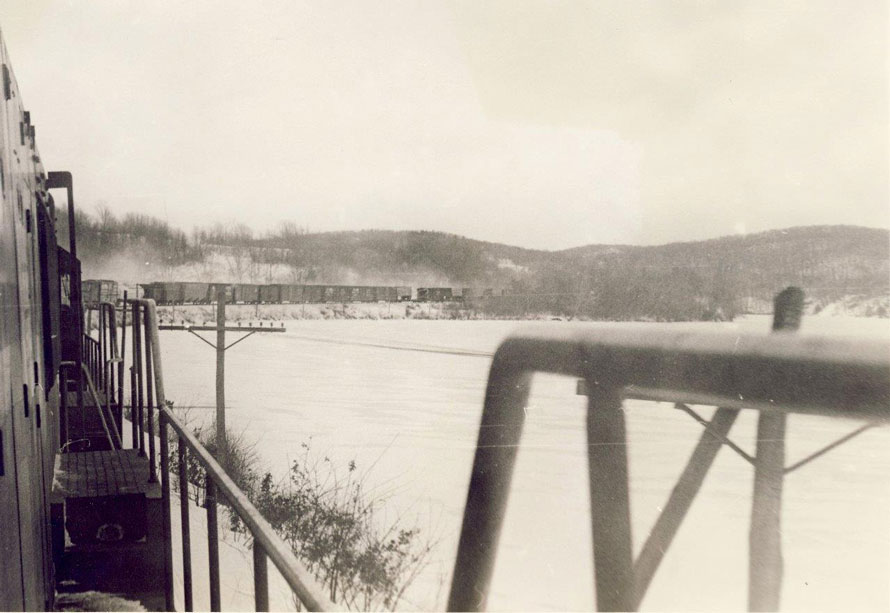
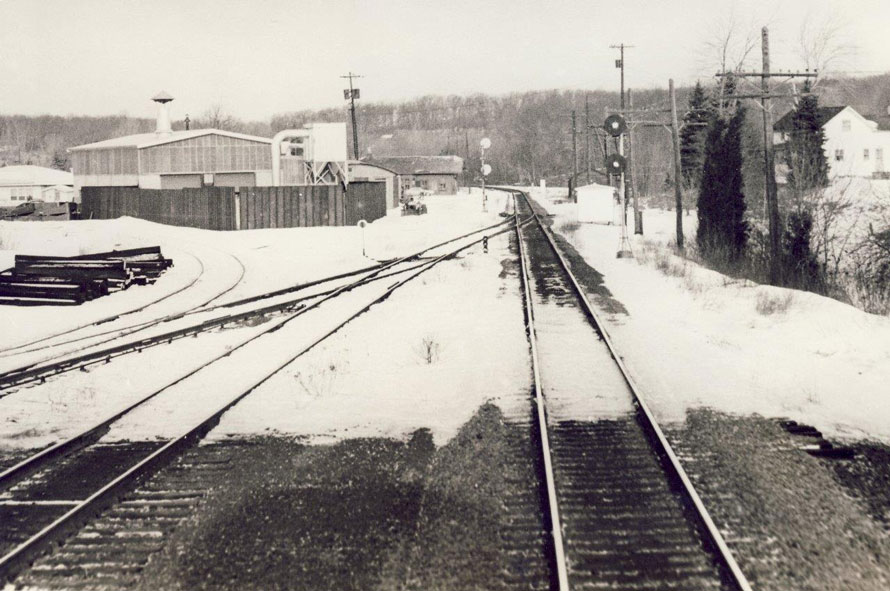
You would make to the top of the hill at Holmes as you went by Whaley Lake, sometimes you met another train here but if not you continued west and would start downhill going by Green Haven Prison. The guards would flash the spot light at you when you blinked your headlight. Down you went into Hopewell Jct. again it could be another meeting point, the Beacon Branch was on your left and the old station was at what was at one time a diamond. If it was during the daytime sometimes Burt Bacon, the Road foreman, would be out there to watch you and use his radar gun to check out the engineer. It was pretty level now and next was the slowdown for the Poukeepsee Bridge; 7.5 miles an hour and the dispatcher’s office had a timer to check each train. When we went across this bridge, as a rule I stood outside on the headend to take in the view of the mountains and the Hudson River. Next was CP Berra and we would have to find out what track you would yard your train. We pulled in and dropped the train and put the power away.
At the engine house we would chat a bit about the trip and I would walk to the RailroadYMCA and get a room. Sometimes I ate other times I just went to bed. I would have a job symbol for going back as well as a reporting time. The meals at the Y were wonderful, all home cooked by older women as I remember and they knew how to cook—really knew how to cook. And the deserts? To die for homemade pies. Breakfast was huge; biggest eggs you ever saw. Later on I was told the farmers who sold the eggs to the Y gave them the rejects, So remember when you buy eggs that come in a box sized so they are all the same. That’s not how the always come out.
The return trip was the same, walk to the engine house get the power, pick up the train with loads from all over going to New England. It was rare that I got to see this trip in daylight, so I did not get many pictures but I sure wish I had taken more. You think these things go on forever but then they are gone. I hope you have enjoyed this story. I’m not a writer just a story teller. This was written almost twenty years ago, so I went through it and updated it a bit. I think my mother would still approve.
John Springer – Photographs and text Copyright 2020
This story first appeared in the Penn Central Post, put out by the Penn Central Historical Society
John … EXCELLENT piece … for an off division man ! Brought back lots of great memories thank you.
that’s right you were hired over there 🙂
Thanks John for the fine historical story.
Steve I thought I sent this to you but I guess not. Thanks for your comment, coming from a man that published such a good book on towers I appreciate it!
Very interesting article and thanks for preparing it. I used to fish at Ice Pond and in addition to the fishing I enjoyed seeing both New Haven trains on the east side of the Pond and New York Central trains on the west side. In reference to the extra large eggs served at the YMCA when I would visit my uncle in Connecticut almost all the eggs we ate had two yolks. He managed the poultry market near New Haven and these eggs were also rejects so he would bring them home with him. Connecticut was at one time an important poultry production state and when the U.S. Postal Service produced a stamp honoring “The American Poultry” industry in 1948 it was issued at New Haven.
Bill I never knew that about Ct and eggs! but I sure remember them at the Maybrook Y. I use to ice fish myself but its been a few years now but I have all my stuff!
I read this story in PC Post, enjoyed it then and enjoyed it again today.
I worked with John a few times as CDR and brakeman, when Selkirk T and E held the job in late ‘70’s early ‘80’s.
Again it brought back a lot of memories working the job from Selkirk down to Beacon (Hudson Div), over the Beacon Br to Hopewell onto the Maybrook to Danbury/Derby/Turkey Brook/Devon/NH station to Cedar Hill yard and take rest. Repeat back to SK.
John may have forgotten the winter night we got a drawbar on “funny end” of a box car. It was in the “dip” near the west end of the siding at Brewster. My headend man and I wrestled that drawbar from under the car in about two hours in the snow and cold! Cabled up the car and dropped it on east end of siding for car department to repair; back to our train and continue east. We stopped at Windmill Diner west of CP Fairgrounds to grab coffee and warm up! This was a good place to stop account Berkshire Disp didn’t know where you were until you knocked down “Home Board” at CP Fairgounds.
Merry Christmas and Happy New Year to all my PC/CR/Amtrak Brothers and Sisters.
Jim, I remember getting that at Fairgrounds? And each time I drive over 84 and cross over the spot I think about it. By chance could i be right? Jeff Ingerham was the dispatcher that night. Great guy!
John I thought it was at the dip just east of the siding at Brewster (and west of bridge going over Brewster). But more I think about it (40 years ago now!), it could be closer to CP Fairgrounds.
Happy New Year John, and the Family.
I remember Jeff when he was West End Disp on B&A and I would work the Pushers out of Pittsfield (NA Jct).
By chance you would not be talking about the Springer that lived in Chatham?
No, that “John Springer” worked the B&A in 60’ s 70’s and 80’s. Yes he lived in Chatham and worked most of his career in Pittsfield (NA Jct) on Engineer’s Spare Board. I worked with John (and his nephew, Bob Springer) on PC/CR. A good railroader to work with.
They both taught me a lot.
I spent several summers back in the 1960s in a camp on Whaley Lake. One of the best things about the camp was being able to see and hear those long Maybrook-bound freights roll by across the water. Recall multiple GE U-Boats in fading NH McGuinness livery was most frequently seen power. Most trains came through at night — you’d hear them rumbling for a long time coming and going. Thanks for giving us insight into the men who made it happen all those years ago.
Yes Steve most ran at night thats why I don’t have many pictures. Railroad crews work mostly at night on freights at least I did 🙂 Glad you liked the story.
Great history. Thank you for sharing. Too bad they never repaired the Poukeeps. Bridge after that fire in 1974. The bridge must have been in use in 1974 I would think. Thanks again.
thank you. no that was not to be done. And the amount of freight coming into NH is nothing like it was at that time either.
Great story. I think references to CP Berra should be CP Berea.
Thanks for that bit of history I am a diehard railfan/modeler always loved the New Haven colors since Christmass Day 1957 when we received those New Haven Lionel F As. .4 decades later I walked the Maybrook line with my dog from Brewster to Towners. And one time snuck into the old Maybrook Yard and found the old YMCA and I think the Main Office Buildings remnants of the old turn table pit and coaling tower .Often trying to picture that neat railroad at work mainly the Maybrook line .Now I have better Idea of all that rail action by reading your essay and seeing your photos,truly appreciate it
Wayne so glad you enjoyed the story and wrote me. By chance did you take any pictures while you roamed around the old Y and the engine house?
That was a great article. In the early 90’s I walked from Whaley Lake to the curve a Poughquag. That was a very tight curve! When I was a kid in the 60’s as we drove on Rt 6 to Danbury I always looked for trains but unfortunately never saw one. I am so sad the Maybrook line no longer runs freights and never will again. Who would have imagined in the old days that such an important line would fade into obscurity? Thankfully, your article brought it back to life if only for a moment. I would love to hear more detail of operating trains on the Maybrook line. Thank you
I’m glad you enjoyed it, nobody ever thought trains would stop running there. What would you like to know perhaps I have an answer to your questions. John
I was the ticket agent operator in Danbury the day the Poughkeepsie Bridge burned. I was only on the Railroad 4 yrs then. I retired 2/2010 . I had many good experiences while working in Danbury.
Thank you for the awesome compliments about my grandmother’s (Helen Dunn) cooking and her locally famous pies. My mother, Helen Dunn Sulle, also worked there as a cook. Of course I’m bias, but I totally agree with you as did all of the locals who ate there.
Lori, thank you for writing this! It makes my day! The women that worked there treated us very well. By chance do you have any pictures taken of her or anything to do with the Y ?
Yes !! I have one on my phone that I wanted to share with you, but I don’t see an option to post it here. Where shall I send it?
Lori, Edd sent you my email address can you send me that picture?